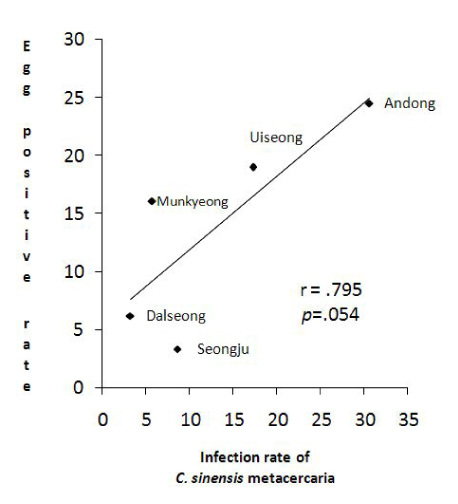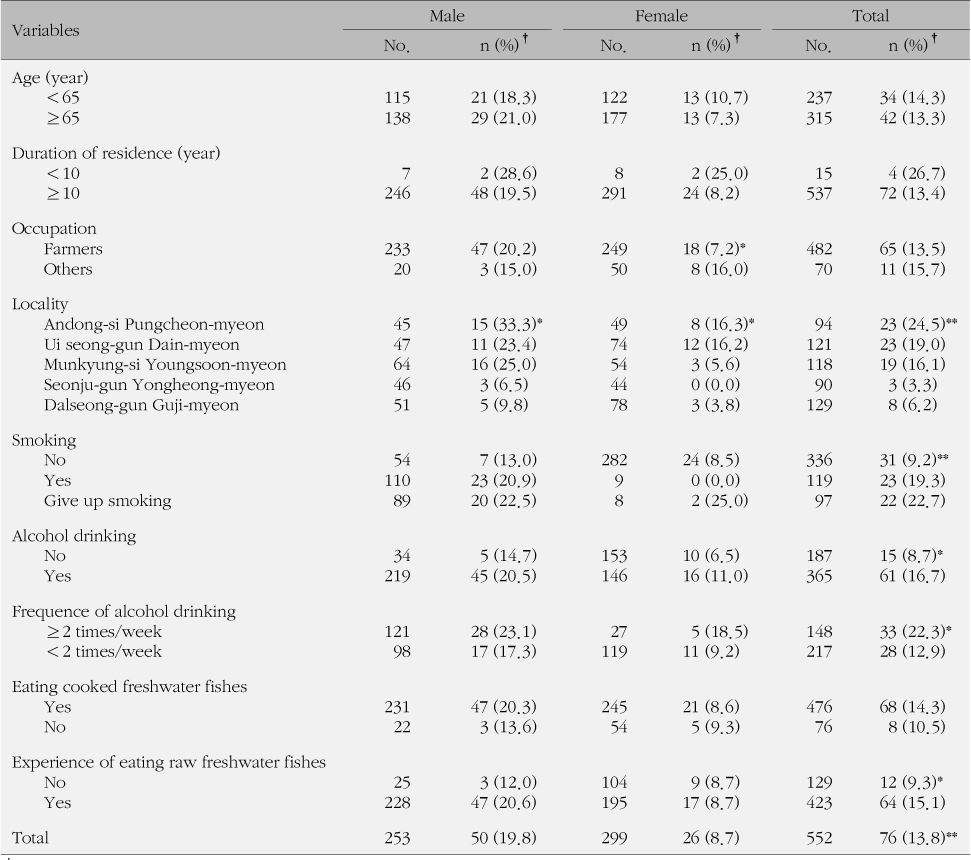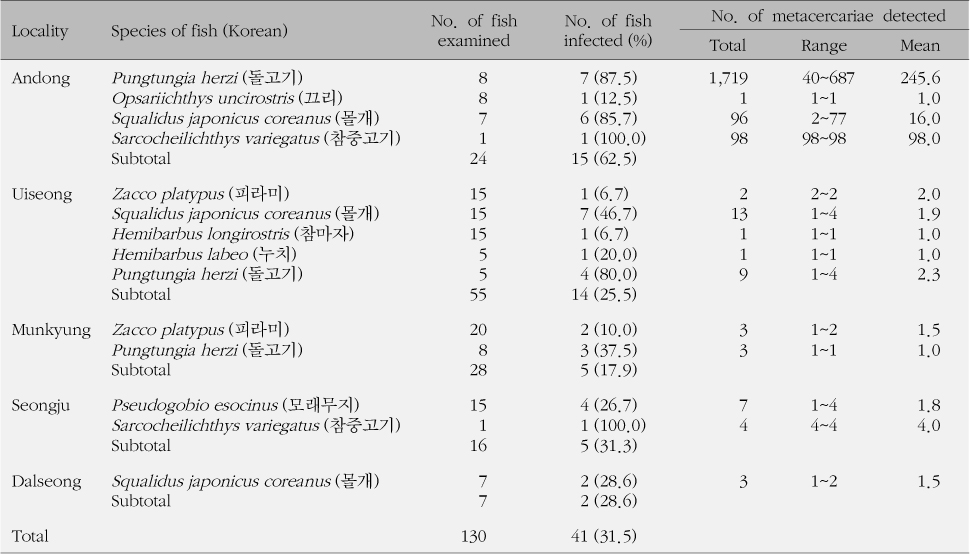References
1. Baek SH, Kim JH, Gwak TD, Jung SP. The Infection pattern of clonorchis sinensis in some region of Nackdong river lower basin. J Korean Acad Fam Med 1997;18(7):696–705.
2. Back EH. Recent patterns of infections with diagnotic Laval trematodes from freshwater fishes in tree rivers, Kyungbuk province Daegu: Keimyung University; 2009. Unpublished doctoral dissertation.
3. Cho YJ, Chu JP, Rim HJ, Hwang SK. Viability of clonorchis sinensis metacercaria according to the Food-processing methods. Korean J Infect Dis 2002;34(4):242–247.
4. Choi DW, Ahn DH, Choy CH, Kim SS. clonorchis sinensis in Kyungpook Procince, Korea (Changing pattern of clonrchis sinensis infection among inhabitants). Korean J Parasitol 1976;14(2):117–122.
5. Chung DI, Kim YI, Lee KR, Choi DW. Epidemiological studies of ttrematodes in Youngyang county, Kyungpook province. Korean J Parasitol 1991;29(4):325–338.
6. Hyun MC, Joo CY. Epidemiological studies of clonorchis sinensis in the upper stream areas of Naktong river. Keimyung Med J 1994;13(1):22–46.
7. Joo CY, Chung MS, Kim SJ, Kang CM. Changing patterns of clonorchis sinensis infection in Kyongbuk. Korea. Korean J Parasitol 1997;35(3):155–164.
8. Ju YH, Oh JK, Kong HJ, Shon WM, Kim JI, Jung KY, et al. Epidemiologic study of clonorchis sinensis infection in a rural area of Kyongsangnam-do, South Korea. J Prev Med Public Health 2005;38(4):425–430.
9. Kang SB. Changing patterns of clonorchis sinensis infection in Yeongcheon, Kyungpook province, Korea Taegu: Keimyung University; 1997. Unpublished doctoral dissertation.
10. Kim BJ, Ock MS, Kim IS, Yeo UB. Infection status of clonorchis sinensis in residents of Hamyang gun, Gyeongsangnam-do, Korea. Korean J Parasitol 2002;40(4):191–193.
11. Kim EM, Kim JL, Choi SY, Kim JW, Choi MH, Bae YM, et al. Infection status of freshwater fish with metacercaria of clonorchis sinensis in Korea. Korean J Parasitol 2008;146(4):247–251.
12. Korea Centers for Disease Control and Prevention. The Fourth Korea National Health and Nutrition Examination Survey-KNHANES IV-2 Seoul: Korea Centers for Disease Control and Prevention; 2008.
13. Korea Centers for Disease Control and Prevention, Korea Association of Health Promotion. Prevalence of Intestinal Parasitic Infection in Korea-The 7th Report Seoul: Korean Centers for Disease Control and Prevention, Korea Association of Health Promotion; 2005.
14. Lee GS. Prevalence of clonorchiasis and its related factors among the inhabitants in Okcheon-gun, Korea Daejeon: Chungnam University; 2008. Unpublished doctoral dissertation.
15. Lee JS, Lee WJ, Kho WG, Kim DS, In TS, Choi KS, et al. Transition of endemicity of clonorchiasis in main riverside areas in Korea. Rep Natl Ins Health 1994;31(1):172–192.
16. Lee SH, Ahn SH, Joo CY. Epidemiological studies of clonorchis sinensis in the coastal areas of Kyungpook, Korea. Keimyung Med J 1996;15(4):303–326.
17. Moller H, Heseltine E, Vainio H. Working group peport on schistosomes, liver flukes and Helicobacter pylori. Int J Cancer 1995;60(5):587–589.
18. Park MD. A study on the effects of clonorchis sinensis control intervention at a sumjin riverside area (1999-2004) Gwangju: Chonnam National University; 2006. Unpublished master's thesis.
19. Seo BS, Lee SH, Cho SY, Chai JY, Hong ST. An epidemiologic study on clonorchiasis and metagonimiasis in riverside area in Koera. Korean J Parasitol 1981;19(2):137–150.
20. Shin DS. Epidemiological studies of clonorchis sinensis prevailed in the people of Kyungpook Province. Korean J Parasitol 1964;2(1):1–13.
21. Shon WM. Infection status with clonorchis sinensis metacercariae in pseudorasbora parva from a tributary rtream of Nacktongang (River) in Pusan. J Exp Biomed Sci 2002;8(1):7–11.
22. Soh CT, Lee KT, Min DY. Prevalences ofclonorchiasis and metagonimiasis along rivers in Jenra-Nam-Do. Korea. Yonsei Rep Trop Med 1976;7(1):3–16.
23. Song IC, Lee JS, Rim HJ. Epidemiological studies on the distribution of clonorchis sinensis infectionin Korea. Korea Univ Med J 1983;20(1):165–190.




